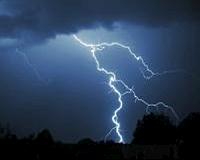 |
Albuquerque NM (SPX) Aug 27, 2010 Solid-state lighting pioneers long have held that replacing the inefficient Edison light bulb with more efficient solid-state light-emitting devices (LEDs) would lower electrical usage worldwide, not only "greenly" decreasing the need for new power plants but even permitting some to be decommissioned. But, in a paper published in the Journal of Physics D, leading LED researchers from Sandia National Laboratories argue for a shift in that view. "Presented with the availability of cheaper light, humans may use more of it, as has happened over recent centuries with remarkable consistency following other lighting innovations," said Sandia lead researcher Jeff Tsao. "That is, rather than functioning as an instrument of decreased energy use, LEDs may be instead the next step in increasing human productivity and quality of life." The assumption that energy production for lighting will decline as the efficiency of lighting increases is contraindicated by data starting with the year A.D. 1700 that shows light use has remained a constant fraction of per capita gross domestic product as humanity moved from candle to oil to gas to electrical lighting. Thus the societal response to more efficient light production has been a preference to enjoy more light, rather than saving money and energy by keeping the amount of light produced a constant. "Over the past three centuries, according to well-accepted studies from a range of sources, the world has spent about 0.72 percent of the world's per capita gross domestic product on artificial lighting," said Tsao. "This is so for England in 1700, in the underdeveloped world not on the grid and in the developed world using the most advanced lighting technologies. There may be little reason to expect a different future response from our species." Far from an example of light gluttony, Tsao said, by increasing the amount of lit work space and bright time, individuals would enjoy the desirable outcome of increasing their creativity and the productivity of their society. To the question of how much light is enough, says Tsao, no one yet has produced a gold standard for light saturation levels. While artificial illumination is considerably better now than decades ago, the researchers write, "People might well choose higher illuminances than they do today, particularly to help mitigate losses in visual acuity in an aging world population." More easily available light also may help reduce seasonal depression brought on by the shorter darker days of winter, and help synchronize biological rhythms, called circadian, that affect human behavior day and night. As for problems that could occur with too much light - from so-called 'light pollution' that bedevils astronomers to biological enzymes that operate better in darkness - Tsao has this to say: "This new generation of solid-state lighting, with our ability to digitally control it much more precisely in time and space, should enable us to preserve dark when we need it." There is no reason to fear, Tsao says, that advancing capabilities "will keep us perpetually bathed in light." Another paper author, Sandia researcher Jerry Simmons points out, "More fuel-efficient cars don't necessarily mean we drive less; we may drive more. It's a tension between supply and demand. So, improvements in light-efficient technologies may not be enough to affect energy shortages and climate change. Enlightened policy decisions may be necessary to partner with the technologies to have big impacts." Other authors of this paper are Randy Creighton and Mike Coltrin, both of Sandia Labs, and Harry Saunders of Decision Processes Inc., of Danville, Calif. The work was supported by Sandia's Solid-State Lighting Science Energy Frontier Research Center, funded by the U.S. Department of Energy's Office of Basic Energy Sciences.
Share This Article With Planet Earth
Related Links Sandia National Laboratories Powering The World in the 21st Century at Energy-Daily.com
 Air Could Become The Newest Alternative Energy Source
Air Could Become The Newest Alternative Energy SourceBoston MA (SPX) Aug 27, 2010 Imagine devices that capture electricity from the air ? much like solar cells capture sunlight ? and using them to light a house or recharge an electric car. Imagine using similar panels on the rooftops of buildings to prevent lightning before it forms. Strange as it may sound, scientists already are in the early stages of developing such devices, according to a report presented here at th ... read more |
|
| The content herein, unless otherwise known to be public domain, are Copyright 1995-2010 - SpaceDaily. AFP and UPI Wire Stories are copyright Agence France-Presse and United Press International. ESA Portal Reports are copyright European Space Agency. All NASA sourced material is public domain. Additional copyrights may apply in whole or part to other bona fide parties. Advertising does not imply endorsement,agreement or approval of any opinions, statements or information provided by SpaceDaily on any Web page published or hosted by SpaceDaily. Privacy Statement |